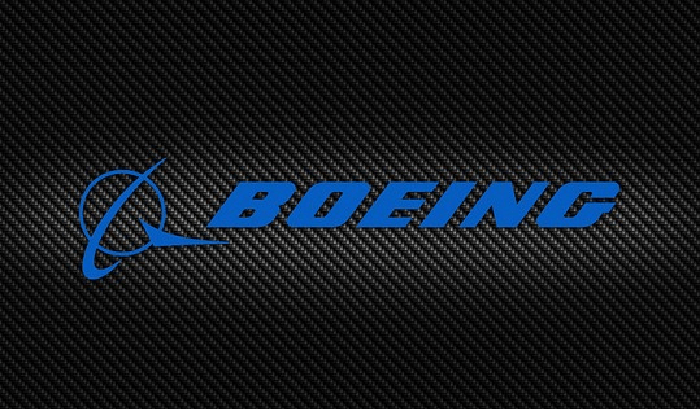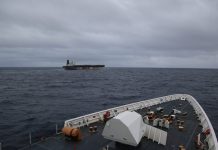Among Defence aviation trendsetters like the Airbus, Lockheed Martin, Northrop Grumman and United Technologies, American aerospace juggernaut Boeing sits on top of the perch with its expertise in fighter jets, commercial aircraft, rotorcraft and advanced weapons.
US’ Most Lethal Killer Drone – Predator-B To Become Even More Deadlier With New Upgrades
However, before Boeing’s flight to the top of the pyramid, it sailed alongside American aerospace defence contractor McDonnell Douglas and many others as Washington’s elite military aircraft manufacturer.
It was at the beginning of the 1990s, when Boeing, which stood tall as the world’s largest commercial aircraft producer, felt the need to become a more potent competitor against Lockheed Martin and others in the military sector and make global commercial airplane business a two-way battle with Airbus.
With Boeing’s orders piling up during the period, it decided to merge with McDonnell, which stood as an important combat aircraft supplier to not just the US but Britain, Italy, Malaysia and Japan. Boeing felt it could utilize McDonnell’s surplus factory capacity in the backdrop of the latter’s decreasing production.
And in 1996, Boeing acquired its long-term rival in a merger deal for $13.3 billion in stock, however, like a tale of two-stories, while one’s need was to create an empire, the other’s, in contrast, was to sustain, which was exactly the case for Boeing and McDonnell Douglas.
In 1993, following the end of the Cold War, Washington called upon US’ main defence contractors for a meeting which is now known as “The Last Supper”. It was announced that the US would be reducing the existing military procurement budget to 50 percent of what it was before and would choose to deal with a limited number of suppliers.
Following the decision, McDonnell Douglas, which had already come out of a merger of Douglas Aircraft Company in 1967, felt immense pressure to compete with fellow defence suppliers, with what was 36 defence companies being consolidated in nine.
McDonnell Aircraft was a leading manufacturer of military aircraft based out of St. Louis in Missouri, while Douglas Aircraft Company was a maker of civil jets in Long Beach, California.
However, their merger wasn’t a happy marriage in the long run with the new company unable to diffuse the hostility felt by the Douglas employees from dominant military types working at McDonnell back in St. Louis, thereby piling more pressure on McDonnell Douglas.
On the other hand, Boeing’s concern was the repercussions of applying its major focus on the highly cyclical market for civil aerospace. Boeing’s President at that time, Phil Condit had stated – “That would have meant Boeing being a bit player in military aircraft and space, while its fortunes ebbed and flowed with the commercial aircraft cycle.”

Condit’s search for stability led him to first delve into possessing space and military aircraft expertise with the acquisition of a medium-sized American defence firm Rockwell International, before going big to buy McDonnell Douglas.
The historical merger led to the formation of the world’s largest aerospace company and second-largest global defence company.
For McDonnell Douglas, who had already fallen from grace due to its declining prospects for major new orders, the deal couldn’t have come at a better time, with the Pentagon deciding to exclude it from bidding in a $200 billion contract to build 3,000 Joint Strike Fighters.
With McDonnell’s designs critiqued to require costlier maintenance, the contract was finalised between Boeing and Lockheed Martin.
However, following the merger, a new lease of life was given to McDonnell Douglas, with despite the new company continuing to be named Boeing, McDonnell would retain its name and operate as a major division, with its chief executive Harry Stonecipher becoming President and chief operating officer.
Following the completion of the merger, the combined company had about 200,000 employees, including those of Rockwell International Corps’ defence and space division. The new Boeing Company’s operations would range from commercial aircraft, military planes, space satellites and launch vehicles.
Moreover, Boeing developed a new department called the Phantom Works, very similar to the famous Skunk Works secret department of Lockheed Martin, which devised “Black Programs” for the Pentagon which included the Blackbird SR-71.
The Phantom Works which would be the Research and Development heart of McDonnell Douglas would look to garner knowledge from different parts of the new company and consolidate it into a business plan.
According to Condit, who became the chairman and chief executive officer of the combined company, the merger was a “historic moment in aviation and aerospace” and his words were echoed by John McDonnell, chairman of McDonnell Douglas, who said – “(Boeing will become the) largest, strongest, broadest, most admired aerospace corporation in the world and by far the largest U.S. exporter.”




